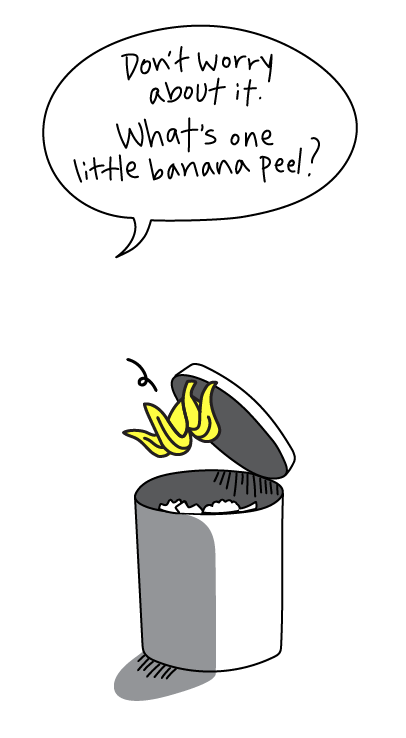The amount of carbon dioxide emitted into the atmosphere as a result of one person’s actions and activities.
The amount of carbon dioxide emitted into the atmosphere as a result of one person’s actions and activities.
A roof is an opportunity to collect rainwater, grow plants, reflect heat out of our atmosphere or help reduce and even eliminate the need for central heating and the fuel it uses (via passive house construction).
The difference in the risk levels and possible outcomes between the decision maker—the person or entity that chose to take a risk—and the bystander who often bears the consequences for that decision maker’s actions.
In short, there are those who take risks and profit from them, and there are those people and things (ecosystems, habitats, the species within those habitats) who were excluded from the decision making process but who pay for the risks.
The duty of every company’s risk manager is to define the risks that result from the company’s activities and, as much as possible, push the costs and consequences of these risks to parties outside of the company. Another duty of the risk manager is to conceal the risks that result from their actions, and the quantification of those risks, from view, so opposition to the action cannot be organized. So because of this concealment there is, in addition to a risk asymmetry between the decision maker and the bystander, also an information asymmetry. This information asymmetry is widened by different methods of obfuscation and misdirection.
One example of a risk asymmetry: A fracking company causes an earthquake by pumping wastewater into the ground. The fracking company suffers no losses as a result but the residents of that area, who were not part of the decision to frack for oil but whose homes are damaged by the earthquakes and whose water is now undrinkable, do.
One reason for high levels of risk asymmetry is the protection afforded companies by limited liability laws.
1) A gateway to the trillions of tons of waste that human beings bury and burn every year.
2) An object that gives people permission to think that waste is acceptable; it is permission to destroy in the guise of convenience.
3) One component in a system that causes habitat destruction and pollution.
Human beings are the only species that produces waste and products that cannot be absorbed into ecosystems and used productively within them. What other species produce can be can be, usually in a short time frame, cycled back into the ecosystem and used productively within it.
This familiar object influences the perceptions of human beings by rendering a behavior that is destructive to ecosystems and the biosphere into what seems to be an ordinary and acceptable act with no negative consequences. In short, it makes normal a behavior that is unknown among all other living things.
Dropping an item into a garbage can is one of human being’s many “out of sight, out of mind” practices.
Alternative behaviors available are recycling, less consumption, composting and the use of re-usable packaging.

Ideas that fail to appreciate, consider and complement the intelligence and complexity and workings of organisms and ecosystems and their support systems, most of which long precede human existence.
See wisdom.
Ideas that appreciate, consider and complement the intelligence and complexity and workings of organisms and ecosystems and their support systems, most of which long precede human existence.
See foolishness.
Own One Thing Efforts are efforts that assign to groups or individuals the responsibility to take care of one small area of the local ecosystem. In short, the group acts as if they were owners of that one thing in order to foster the emotional investment to act as stewards for that one thing.
For instance, a community organization or group of friends might adopt a section of a meadow to plant native plants upon which area birds or insects rely or a group might partner to push a local grocery store to charge their customers for the plastic grocery bags.
The efforts can be formal or informal and involve large groups or small ones. The point is only to give people a small, specific and actionable task that makes some real improvement in the health of an ecosystem.
The sense of ownership involved in these efforts also give the locality a force to oppose efforts to exploit or destroy that ecosystem by developers, mining and extraction operations or industrial agriculture companies.
Language is perception.
Some words blind us. Some words allow us to perceive what might otherwise be beyond the grasp of our senses.
A more accurate term for what is currently referred to as climate change.